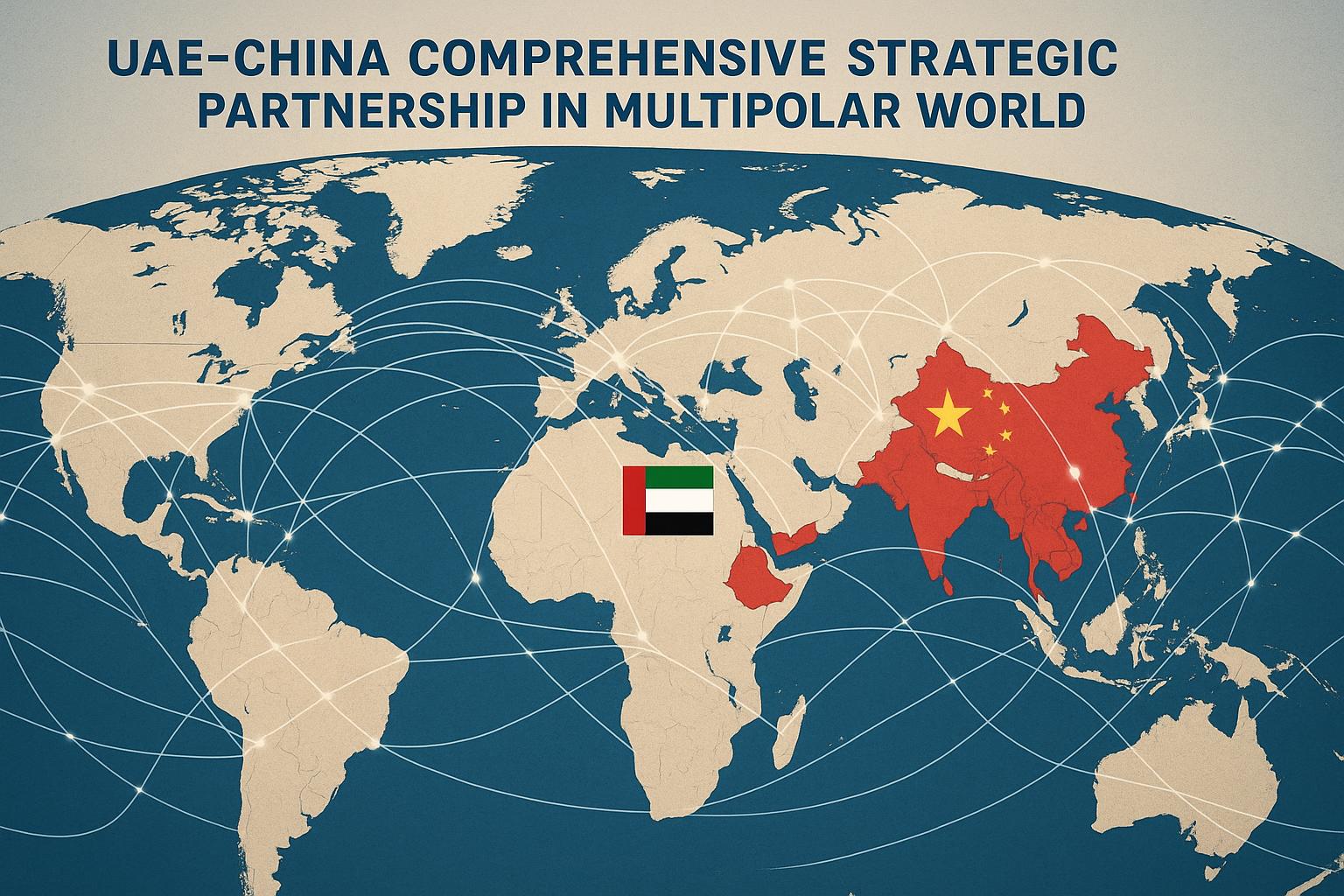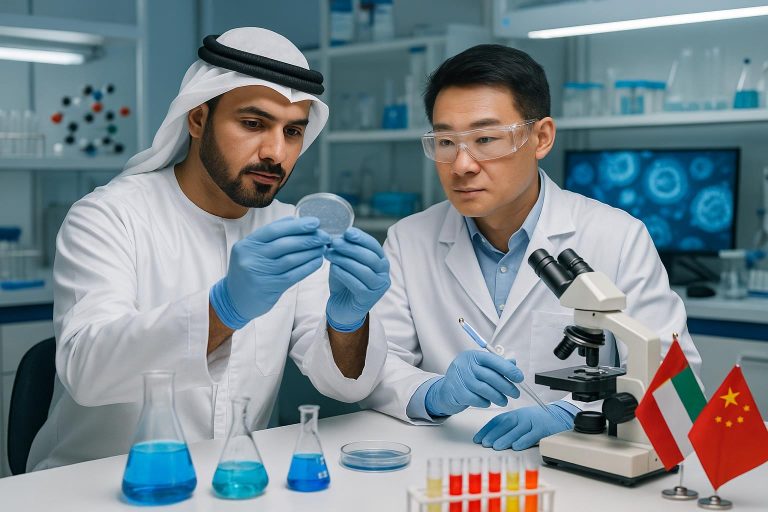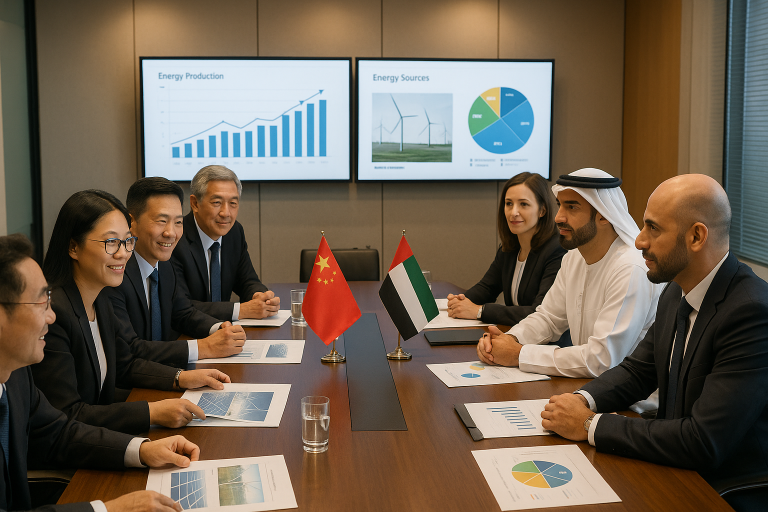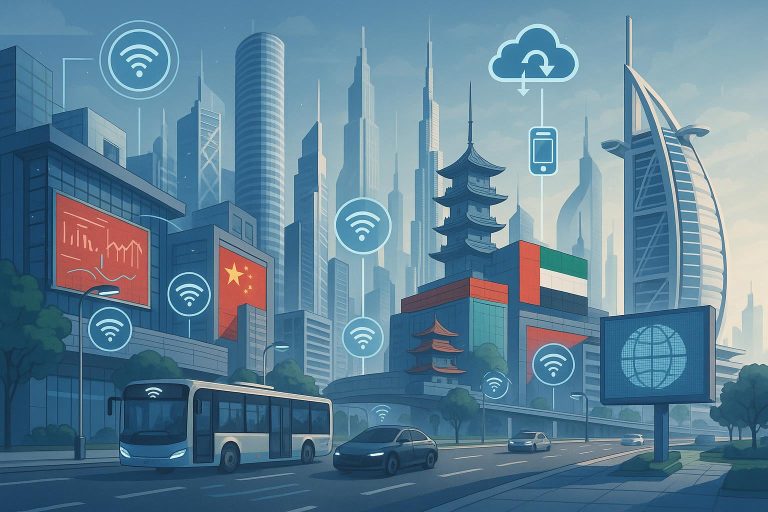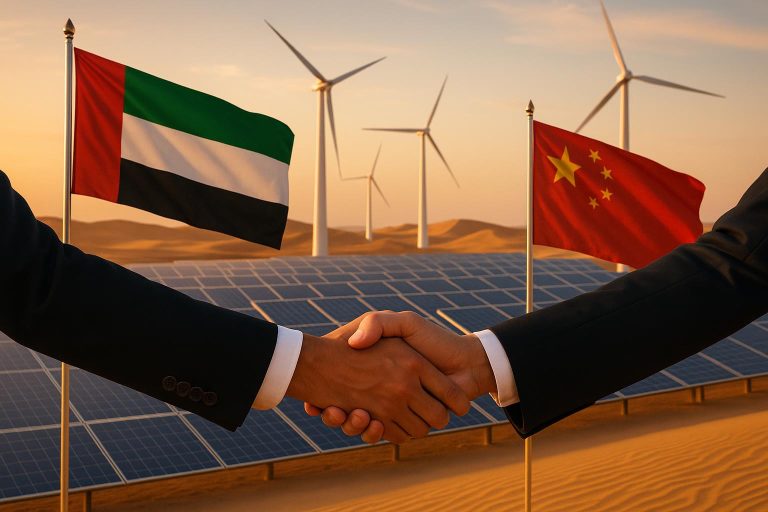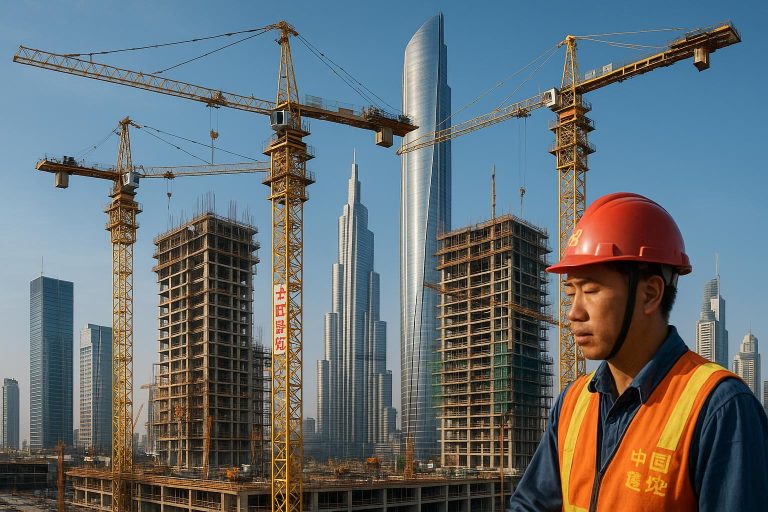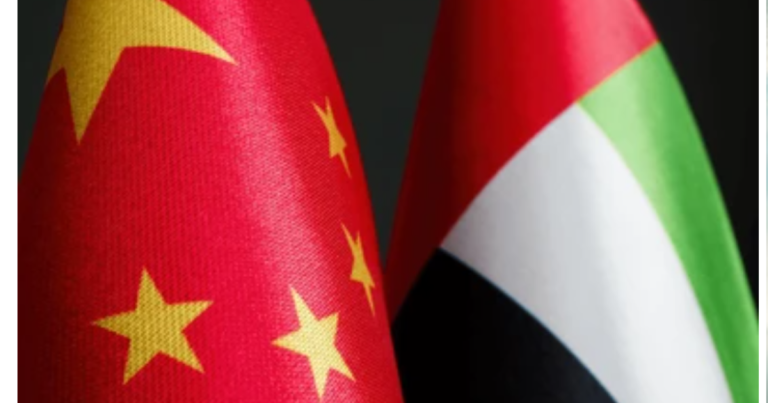A Partnership for a New Era: Analyzing the Geopolitical and Economic Significance of the UAE-China Comprehensive Strategic Partnership in a Multipolar World.
Executive Summary
The United Arab Emirates (UAE) and China have established a robust Comprehensive Strategic Partnership, holding significant geopolitical and economic importance in a multipolar world. Bilateral trade reached a record $101.8 billion in 2024, an 800-fold increase since 1984, with the UAE being China’s largest Middle East export market and China remaining the UAE’s top trading partner. This 2018 partnership drives extensive cooperation across energy, infrastructure, technology, finance, healthcare, agriculture, aviation, logistics, AI, tourism, and financial services. This article analyzes the partnership’s drivers, opportunities, challenges, and future, emphasizing its role in UAE’s economic diversification and China’s Belt and Road Initiative, contributing to a more interconnected global order.
Introduction
In a rapidly evolving multipolar world, the strategic partnership between the United Arab Emirates (UAE) and China has become a pivotal force, influencing regional dynamics and global trade. Elevated to a Comprehensive Strategic Partnership in 2018, this alliance extends beyond economic ties, reflecting a shared vision for stability, prosperity, and innovation. This expansion signifies a deep convergence of strategic interests as both nations pursue national development agendas and navigate global challenges. For the UAE, this partnership is crucial for economic diversification, reducing hydrocarbon reliance, and fostering knowledge-based industries. For China, the UAE is a critical nexus within the Belt and Road Initiative (BRI), serving as a gateway to the Middle East, Africa, and Europe. This article analyzes the multifaceted dimensions of the UAE-China Comprehensive Strategic Partnership, exploring its geopolitical foundations, economic drivers, and implications for both nations and the international community. It examines current cooperation, strategic opportunities, challenges, and offers recommendations for this dynamic and influential bilateral relationship.
The Current Landscape of Bilateral Cooperation
The UAE-China relationship has evolved into a comprehensive strategic partnership, marked by significant growth and diversification. Bilateral trade reached a record $101.8 billion in 2024, an 800-fold increase since 1984. The UAE is China’s largest export market in the Middle East and its second-largest regional trading partner, while China remains the UAE’s largest trading partner. Over 15,000 Chinese firms operate in the UAE, and UAE investments in China surged to $4.5 billion by end of 2023, a 96% increase year-on-year.
Established in 2018, the Comprehensive Strategic Partnership is institutionalized through mechanisms like the UAE-China Investment and Economic Cooperation Working Group, fostering high-level diplomatic engagements. Abu Dhabi serves as a primary investment hub, and Dubai facilitates trade, supported by extensive free zone partnerships.
Cooperation spans key sectors:
1. Energy & Clean Energy: Investments in solar and wind power projects are significant, exemplified by the Masdar-China Silk Road Fund MoU for renewable energy projects in BRI countries.
2. Infrastructure & Logistics: The COSCO terminal at Khalifa Port and the China-UAE Industrial Capacity Zone position the UAE as China’s Gulf gateway within the BRI.
3. Technology & AI: Agreements and initiatives drive digital transformation, including a $5 billion partnership for AI, renewable energy, and infrastructure. Entities like G42 bridge US and China markets, and Digital Dubai explores smart city technologies in Shenzhen.
4. Trade & Free Zones: JAFZA and DP World collaborate with Chinese counterparts, enhancing trade facilitation and attracting investment.
5. Finance & Investment: The BRI has spurred $3.1 billion in UAE projects. China’s CIPS and the UAE central bank cooperate on cross-border payments, alongside Abu Dhabi-China fintech partnerships and ETF launches.
6. Healthcare & Pharmaceuticals: Mubadala’s acquisition of UCB Pharma’s China business highlights strategic entry, with broader cooperation in medical technology and biotech.
7. Agriculture & Food Security: Agreements strengthen agricultural cooperation, including the $33 million smart agricultural project between Silal and China’s Shouguang Vegetable Group, and China’s SVG investing AED 120 million in an Agritech facility in Al Ain.
8. Aviation & Transportation: Emirates and Air China enhance partnerships, and a $1 billion deal for 350 flying taxis signals future mobility focus. The GCAA collaborates on technical and commercial aviation.
9. Logistics & Supply Chain: JINGDONG Property’s Dubai logistics hub and JD.com’s smart supply chain technologies reinforce the UAE’s role as a critical hub.
10. Tourism & Hospitality: The 2025 China-GCC tourism trade fair in Dubai targets a $1 billion tourism opportunity, with Chinese groups exploring hospitality investments.
Opportunities and Strategic Growth Drivers
The UAE-China partnership is driven by strategic opportunities aligning with both nations’ development agendas, expanding cooperation and solidifying their global influence.
1. Belt and Road Initiative (BRI) Synergy: The UAE is a pivotal BRI hub, leveraging its strategic location and infrastructure. $3.1 billion in BRI projects underscore its role as a gateway. This synergy fosters infrastructure development, trade, and investment in logistics, manufacturing, and digital connectivity. Port expansions, industrial zones like the China-UAE Industrial Capacity Zone, and enhanced air links reinforce the UAE’s position as a key global supply chain node.
2. Economic Diversification and New Economy Sectors: The partnership is central to the UAE’s economic diversification, moving beyond oil. Focus on new economy sectors, entrepreneurship, technology, and innovation aligns with UAE Vision 2071. Chinese investments and expertise, including the $5 billion partnership for AI, renewable energy, and infrastructure, and G42’s strategic positioning, drive digital transformation. Collaborations in healthcare, pharmaceuticals, agriculture, and food security (e.g., $33 million smart agricultural project and AED 120 million Agritech facility in Al Ain) foster new industries and resilience.
3. Energy Transition and Green Development: Both nations prioritize cleaner energy. Cooperation in solar and wind power investments and the Masdar-China Silk Road Fund MoU for renewable energy projects in BRI countries drive green development, positioning them as leaders in global energy transition.
4. Enhanced Connectivity and Logistics Hub Status: The UAE’s ambition as a global logistics hub is bolstered by China. Initiatives like JINGDONG Property’s Dubai logistics hub and JD.com’s smart supply chain technologies enhance capabilities. Emirates’ expanded Chinese network and the $1 billion deal for 350 flying taxis signify forward-looking transportation, cementing the UAE’s role in global trade and future mobility.
5. Financial Integration and Innovation: Deepening financial ties, including China’s CIPS and UAE central bank cross-border payment cooperation, and Abu Dhabi-China fintech partnerships, create an integrated ecosystem. ETF products and cross-border payment programs facilitate capital flows and investment, crucial for large-scale projects and seamless trade.
6. Growing People-to-People Exchanges and Tourism: The increasing presence of 15,000+ Chinese firms and focus on tourism and hospitality offer significant cultural and economic growth. The 2025 China-GCC tourism trade fair targets a $1 billion tourism opportunity, with Chinese groups exploring hospitality investments. These drivers, supported by high-level diplomacy, ensure continued growth and mutual benefit, contributing to a balanced global economic order.
Challenges and Critical Considerations
While the UAE-China partnership offers significant opportunities, its long-term success in a multipolar world requires addressing potential challenges with foresight and diplomacy.
1. Geopolitical Sensitivities and Balancing Act: Deepening ties with China occur amidst complex global geopolitics, particularly concerning Western relations. The UAE must carefully balance its strategic alliances to avoid perceived exclusive alignment, ensuring cooperation with China doesn’t strain existing relationships. G42’s positioning between US and China markets exemplifies this delicate balance.
2. Economic Dependency and Diversification Risks: Despite aiding diversification, over-reliance on any single partner, including China, could create economic vulnerabilities. The UAE must maintain a diversified portfolio of international partners for long-term resilience. China also benefits from diversified access points in the Middle East to mitigate regional instability risks.
3. Regulatory Harmonization and Business Environment: Growing bilateral investments necessitate addressing differences in regulatory frameworks and business practices. Harmonizing standards, streamlining investment procedures, and ensuring transparency are crucial for seamless cross-border operations for both Chinese firms in the UAE and UAE investments in China. Continued dialogue through the UAE-China Investment and Economic Cooperation Working Group is vital.
4. Technology Transfer and Intellectual Property Protection: Cooperation in advanced technology, especially AI and digital transformation, raises concerns about technology transfer and IP protection. Robust frameworks safeguarding IP rights and ensuring equitable sharing of advancements are paramount for fostering trust and deeper collaboration in innovation. This is particularly relevant as the UAE leverages AI investments and Digital Dubai explores smart city technologies.
5. Cultural Integration and Human Capital Development: The increasing presence of Chinese businesses and expatriates in the UAE, and vice versa, demands effective cultural integration. Bridging cultural differences, promoting mutual understanding, and investing in human capital development (language skills, cross-cultural training) are essential for a cohesive and productive environment, ensuring shared benefits and local skill development.
Proactively addressing these considerations will mitigate risks and strengthen the UAE-China Comprehensive Strategic Partnership, ensuring its continued growth and mutual benefit in a dynamic global environment.
Case Study Spotlight: COSCO Shipping Ports at Khalifa Port
A key example of the UAE-China Comprehensive Strategic Partnership is the COSCO Shipping Ports Abu Dhabi Terminal at Khalifa Port. Inaugurated in 2018, this joint venture showcases deep collaboration in infrastructure and logistics, directly supporting China’s Belt and Road Initiative (BRI) and solidifying the UAE’s role as a global trade hub. Operated by COSCO Shipping Ports Limited and Abu Dhabi Ports, it represents significant mutual investment and commitment.
The COSCO terminal boosts Khalifa Port’s capacity and connectivity, serving as a vital gateway for Chinese goods to the Middle East, Africa, and Europe, and facilitating UAE exports. Beyond port operations, it embodies the BRI’s vision of interconnected trade routes and economic development. Its advanced automation and efficiency reduce transit times and costs, increasing trade volumes and strengthening supply chain resilience between China and the UAE. This case study highlights how strategic infrastructure investments drive economic integration and geopolitical alignment in a multipolar world.
Future Outlook and Strategic Recommendations
To maximize the UAE-China Comprehensive Strategic Partnership’s potential in a multipolar world, several strategic recommendations are crucial:
1. Deepen Advanced Technologies and Innovation: Prioritize joint ventures in AI, quantum computing, biotech, and space. Building on the $5 billion partnership for AI, renewable energy, and infrastructure, establish joint R&D centers, facilitate talent exchange, and co-create intellectual property. This accelerates UAE’s knowledge-based economy and positions the partnership at the forefront of global innovation.
2. Expand Green and Sustainable Development: Scale up collaboration in renewable energy, green finance, and sustainable urban development. Leveraging the Masdar-China Silk Road Fund MoU, focus on large-scale green hydrogen projects, energy efficiency, and circular economy principles. This aligns with environmental commitments and offers substantial green investment opportunities.
3. Enhance Financial Connectivity and Digital Trade: Integrate financial systems by expanding local currency use, strengthening central bank cooperation on cross-border payments (building on China’s CIPS and UAE central bank collaboration), and exploring blockchain-based trade finance. Robust digital trade infrastructure will streamline customs and reduce transaction costs.
4. Foster People-to-People and Cultural Exchange: Strengthen cultural understanding through expanded educational exchanges, promoting tourism (capitalizing on the $1 billion tourism opportunity from China), and supporting cultural festivals. This builds deeper bonds and cultivates future leaders.
5. Diversify Investment Portfolios and Market Access: Continue diversifying investment portfolios. For the UAE, attract Chinese investment into non-oil sectors; for China, explore new avenues in the UAE’s evolving economy. Collaboratively explore market access in third countries, especially within the BRI framework.
6. Strengthen Multilateral Cooperation: Enhance coordination in multilateral forums (UN, G20) to address global challenges like climate change and economic instability. The partnership can model South-South cooperation, promoting inclusive globalization and a more equitable international order.
Strategic focus on these areas will enable the UAE-China partnership to achieve its full potential, contributing significantly to regional stability, global economic growth, and a truly multipolar international system.
Conclusion
The UAE-China Comprehensive Strategic Partnership is a dynamic and influential alliance, marked by significant economic growth and broad sectoral cooperation. With bilateral trade reaching a record $101.8 billion in 2024 and substantial investments in new economy sectors, this partnership reflects shared visions for prosperity in a rapidly evolving global landscape. The UAE’s strategic role in China’s Belt and Road Initiative and its economic diversification goals align powerfully with China’s global economic and technological ambitions. While geopolitical complexities and economic dependencies require careful management, proactive engagement in clean energy, advanced technology, and financial integration demonstrates a forward-looking approach. By fostering mutual understanding, harmonizing regulations, and expanding people-to-people exchanges, the UAE and China are securing their interests and contributing to a more interconnected, resilient, and multipolar international order. This partnership, built on mutual respect and shared ambition, serves as a blueprint for a new era of global cooperation.
References
[1] Research findings provided by the UAE China Chamber of Commerce (Internal Document, 2025).
Note: All statistical data and specific project details cited in this article are derived from the comprehensive research findings provided for this analysis.

